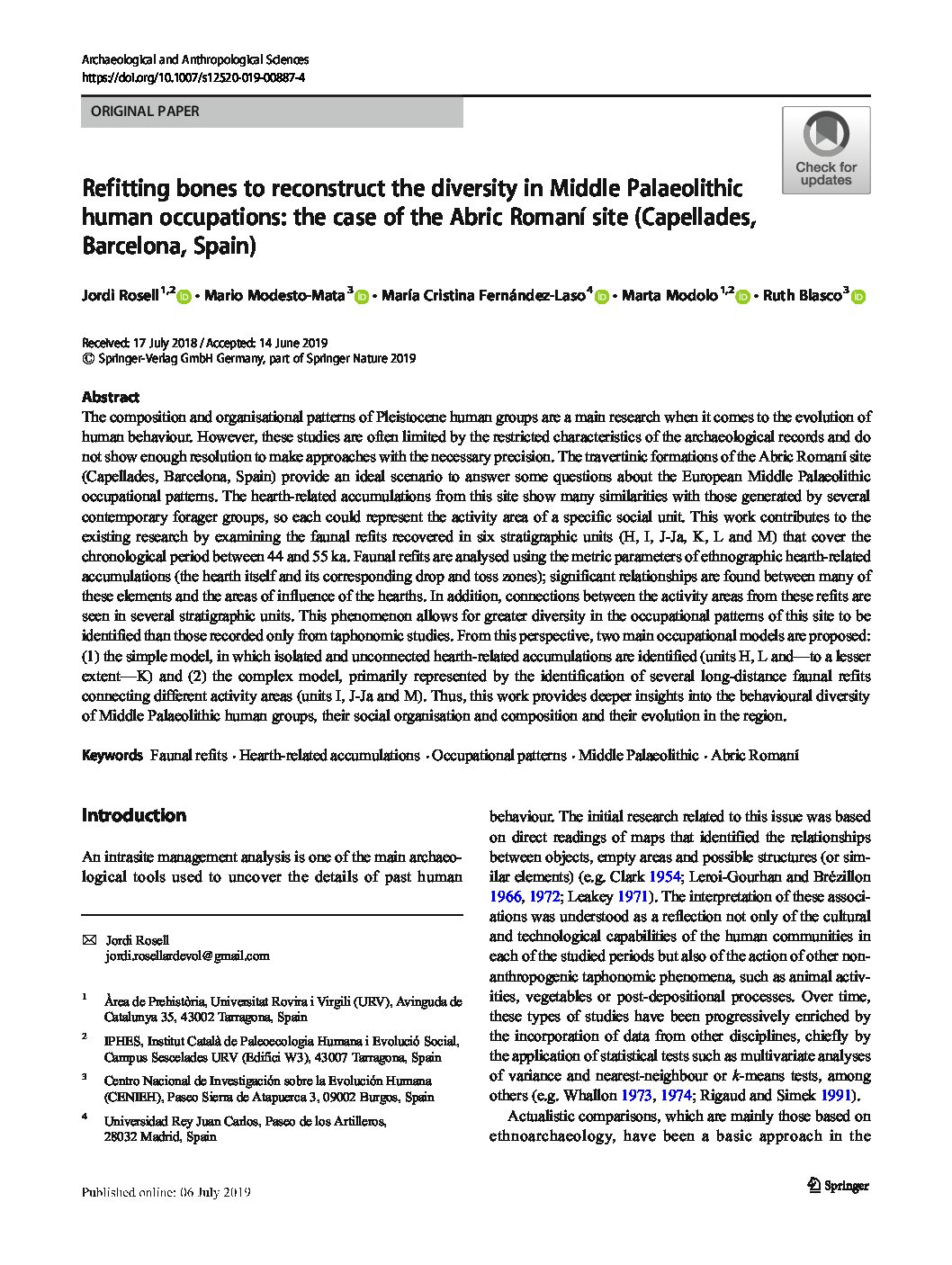Refitting bones to reconstruct the diversity in Middle Palaeolithic human occupations: the case of the Abric Romaní site (Capellades, Barcelona, Spain)
The composition and organisational patterns of Pleistocene human groups are a main research when it comes to the evolution of human behaviour. However, these studies are often limited by the restricted characteristics of the archaeological records and do not show enough resolution to make approaches with the necessary precision. The travertinic formations of the Abric Romaní site (Capellades, Barcelona, Spain) provide an ideal scenario to answer some questions about the European Middle Palaeolithic occupational patterns. The hearth-related accumulations from this site show many similarities with those generated by several contemporary forager groups, so each could represent the activity area of a specific social unit. This work contributes to the existing research by examining the faunal refits recovered in six stratigraphic units (H, I, J-Ja, K, L and M) that cover the chronological period between 44 and 55 ka. Faunal refits are analysed using the metric parameters of ethnographic hearth-related accumulations (the hearth itself and its corresponding drop and toss zones); significant relationships are found between many of these elements and the areas of influence of the hearths. In addition, connections between the activity areas from these refits are seen in several stratigraphic units. This phenomenon allows for greater diversity in the occupational patterns of this site to be identified than those recorded only from taphonomic studies. From this perspective, two main occupational models are proposed: (1) the simple model, in which isolated and unconnected hearth-related accumulations are identified (units H, L and—to a lesser extent—K) and (2) the complex model, primarily represented by the identification of several long-distance faunal refits connecting different activity areas (units I, J-Ja and M). Thus, this work provides deeper insights into the behavioural diversity of Middle Palaeolithic human groups, their social organisation and composition and their evolution in the region.


